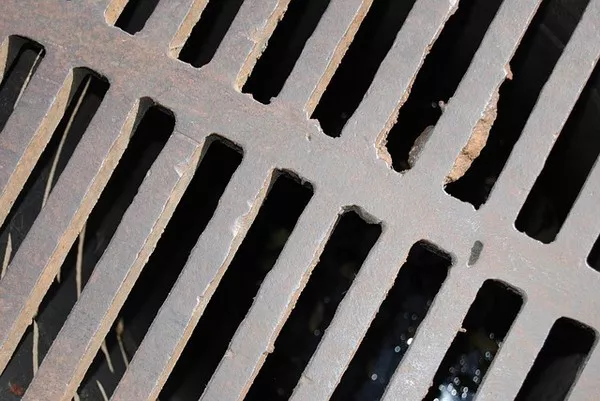Water pollution has emerged as one of the most pressing environmental issues of our time. As industrialization and urbanization continue to grow, the quantity and complexity of pollutants entering our water bodies have increased significantly. Wastewater treatment stands at the forefront of combating this challenge, playing a crucial role in protecting both public health and the environment. This article delves into the intricacies of wastewater treatment, exploring its processes, significance, and future prospects.
What is Wastewater?
Wastewater is any water that has been adversely affected in quality by anthropogenic influence. It includes a wide range of contaminants from various sources, such as domestic sewage, industrial effluents, agricultural runoff, and stormwater. The composition of wastewater is complex, containing organic and inorganic matter, pathogens, nutrients, and hazardous substances.
Categories of Wastewater
Domestic Wastewater: Originates from residential areas and comprises sewage from households, including water from bathrooms, kitchens, and laundry.
Industrial Wastewater: Generated from manufacturing processes and industrial activities. It can contain heavy metals, toxic chemicals, and other hazardous pollutants.
Stormwater Runoff: Water from precipitation that flows over surfaces and collects pollutants like oil, pesticides, and debris before entering water bodies.
Agricultural Runoff: Contains fertilizers, pesticides, and animal waste from farming activities, contributing to nutrient pollution in water bodies.
The Need for Wastewater Treatment
The primary objective of wastewater treatment is to remove contaminants to produce water that is safe for discharge into the environment or for reuse. Untreated wastewater can cause severe environmental and health problems, including:
Waterborne Diseases: Pathogens in untreated sewage can spread diseases such as cholera, dysentery, and hepatitis.
Eutrophication: Excess nutrients, particularly nitrogen and phosphorus, can lead to algal blooms, depleting oxygen in water and harming aquatic life.
Chemical Contamination: Toxic substances can accumulate in the food chain, posing risks to wildlife and human health.
Habitat Degradation: Pollutants can destroy aquatic habitats, affecting biodiversity and ecosystem services.
Stages of Wastewater Treatment
Wastewater treatment typically involves multiple stages to effectively remove contaminants. These stages can be broadly categorized into primary, secondary, and tertiary treatment.
Primary Treatment
The primary treatment aims to remove large solids and suspended particles through physical processes. It includes:
Screening: Removes large objects such as sticks, rags, and plastics that could damage equipment or obstruct the flow.
Sedimentation: Allows suspended solids to settle at the bottom of sedimentation tanks, forming sludge that is later removed.
Skimming: Removes grease and oil from the surface of the water.
Secondary Treatment
Secondary treatment focuses on reducing organic matter and nutrients through biological processes. It includes:
Activated Sludge Process: Uses aerobic microorganisms to break down organic matter in aeration tanks. The resulting mixture is then sent to secondary clarifiers where biomass settles as sludge.
Trickling Filters: Wastewater is sprayed over a bed of stones or plastic media covered with biofilm. Microorganisms in the biofilm degrade organic pollutants.
Lagoons: Shallow basins where wastewater is treated through natural processes involving algae and bacteria.
Tertiary Treatment
Tertiary treatment provides additional purification to remove residual contaminants, ensuring the water meets specific quality standards for discharge or reuse. It includes:
Filtration: Removes fine particles through sand filters, membrane filters, or activated carbon.
Disinfection: Eliminates pathogens using chlorine, ultraviolet (UV) light, or ozone.
Nutrient Removal: Targets nitrogen and phosphorus removal through advanced biological or chemical processes to prevent eutrophication.
Advanced Treatment Technologies
With the increasing complexity of pollutants, advanced treatment technologies are being developed and implemented. These include:
Membrane Bioreactors (MBRs): Combine biological treatment with membrane filtration for high-quality effluent and compact footprint.
Advanced Oxidation Processes (AOPs): Use powerful oxidants like hydrogen peroxide and UV light to degrade persistent organic pollutants.
Constructed Wetlands: Mimic natural wetlands to treat wastewater through physical, chemical, and biological processes.
Electrochemical Treatment: Uses electrical current to precipitate and remove contaminants, particularly heavy metals and refractory organics.
Wastewater Reuse and Resource Recovery
As water scarcity becomes a global concern, wastewater reuse and resource recovery are gaining importance. Treated wastewater can be reused for various purposes, including:
- Agricultural Irrigation: Reduces the demand for freshwater and provides nutrients to crops.
- Industrial Processes: Supplies water for cooling, boiler feed, and process applications.
- Potable Water Supply: Advanced treatment technologies can produce high-quality water suitable for drinking.
- Environmental Restoration: Replenishes rivers, wetlands, and aquifers, supporting ecosystem health.
Resource recovery from wastewater includes extracting valuable materials such as:
- Biogas: Produced from anaerobic digestion of sludge, it can be used as a renewable energy source.
- Nutrients: Phosphorus and nitrogen can be recovered and used as fertilizers.
- Biosolids: Treated sludge can be used as soil amendments in agriculture and landscaping.
Challenges and Future Prospects
Despite the advancements in wastewater treatment, several challenges remain:
Infrastructure: Aging infrastructure in many regions requires significant investment for upgrades and maintenance.
Energy Consumption: Treatment processes can be energy-intensive, necessitating the development of more energy-efficient technologies.
Emerging Contaminants: Pharmaceuticals, personal care products, and microplastics pose new challenges for treatment systems.
Public Perception: Acceptance of treated wastewater for reuse, particularly for potable purposes, requires addressing public concerns and enhancing trust.
Future prospects in wastewater treatment focus on:
Decentralized Systems: Small-scale treatment plants close to the source of wastewater generation can reduce transportation costs and enhance local reuse.
Green Technologies: Emphasizing nature-based solutions and low-energy processes to minimize environmental impact.
Digitalization: Utilizing sensors, data analytics, and artificial intelligence for real-time monitoring and optimization of treatment processes.
Integrated Water Management: Adopting holistic approaches that consider the entire water cycle, from source protection to wastewater treatment and reuse.
See Also Membrane Bioreactor Wastewater Treatment: Advancements & Applications
Conclusion
Wastewater treatment is indispensable in addressing water pollution and ensuring the sustainability of water resources. As the world grapples with increasing pollution and water scarcity, the development and implementation of effective wastewater treatment technologies are more critical than ever. By advancing treatment methods, promoting resource recovery, and fostering public acceptance of water reuse, we can safeguard our water bodies and secure a healthy, sustainable future for generations to come.

